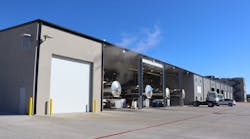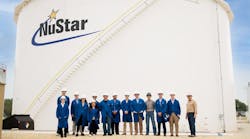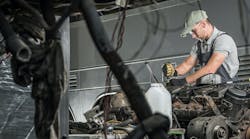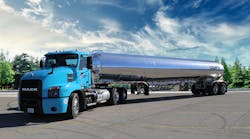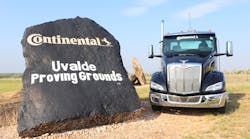Top issues of concern to the trucking industry include the economy, CSA 2010, government regulation, hours of service, driver shortage, fuel issues, transportation funding/infrastructure, onboard tech, environmental issues, and truck size and weight. The top 10 list was presented by the American Transportation Research Institute (ATRI) during the American Trucking Associations 2010 Management Conference held October 16-19 in Phoenix AZ.
As was the case in 2009, the state of the nation’s economy was the top concern for the truck fleets that participated in this year’s ATRI survey. Approximately 35% of respondents ranked this as the number one issue in 2010, but that was a significant decrease from 51.6% in 2009. This decrease likely reflects improvements experienced in the US economy over the past year and the impact rising freight volumes are having on fleets, according to ATRI officials.
CSA 2010 made its first appearance in the ATRI survey. With over a quarter of respondents ranking this as the top issue, CSA 2010 earned its spot due to the expansive nature of the Federal Motor Carrier Safety Administration’s (FMCSA’s) new regulatory framework but also due to the uncertain impact CSA 2010 will have on carriers and drivers.
Government regulation overall dropped from second to third place in the 2010 survey. This continued high ranking of government regulation is in large part due to legislative activities, at both the national and local levels, that trucking industry stakeholders perceive as detrimental to industry operations and finance, according to ATRI.
Rules regulating truck driver hours of service (HOS) climbed one spot into fourth. HOS peaked as the number one issue in 2007 shortly after a court order put the rules in jeopardy. Concern about possible changes in the rules later this year put the issue back in the top half of the survey. Nearly 40% of respondents ranked HOS and the first, second, or third most important issue.
The driver shortage is back, and it landed at number five on the list. This is yet another indicator that the economy is recovering, and it may also reflect new safe-driver hiring challenges related to CSA 2010 and other new federal regulations.
Fuel price volatility has meant wide variation in the way the issue is ranked each year in ATRI’s survey. It was the top issue in 2005 and 2008, but fell to third in 2009 and plunged another three spots in this year’s survey. With the global recession reducing overall demand for fuel, prices remain relatively low, but respondents remain concerned about fuel as a long-term issue.
Ranked at seven, transportation funding/infrastructure was a hybrid issue this year, combining elements of highway congestion, infrastructure, and transportation funding. Ongoing congestion impacts, deteriorating highway infrastructure, and a lack of movement on highway reauthorization by Congress combined to keep this issue in the Top 10.
After first surfacing in 2007 as a Top 10 issue and remaining in the 10th spot each year since, onboard truck technology climbed two spots this year to number eight. The primary driving force seems to be the focus by both the US and Canadian governments on mandated use of electronic onboard recorders for HOS compliance and speed limiters/governors for speed management.
Environmental issues dropped two spots to ninth this year, attaining the lowest rank since 2007. More pressing issues, such as the economy and CSA 2010, simply trumped environmental concerns. ATRI officials say they believe environmental issues will return to the forefront as regulations are proposed to reduce greenhouse gases and other engine emissions.
For only the second time, size-and-weight ranked as a Top 10 issue. More fleets are looking at bigger vehicles as a means of addressing highway congestion, environmental challenges, and the growing driver shortage.
